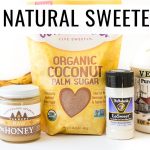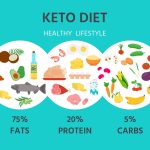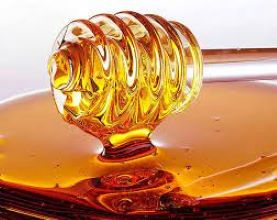“Honey and Fructose: Exploring the Sweet Truth About Nature’s Golden Elixir”
Honey, often regarded as a wholesome alternative to refined sugar, has been cherished by humans for centuries. It’s a natural sweetener produced by bees, boasting a unique flavor and a range of potential health benefits. However, a common question arises: does honey contain fructose? In this article, we will delve into the world of honey, uncovering its fructose content, comparing it to other sweeteners, and exploring its pros and cons for your health and diet.
How much fructose does honey contain?
Honey’s nutritional profile can vary depending on the floral sources used by bees. According to the U.S. Department of Agriculture (USDA), one tablespoon of honey, which equals approximately 21 grams, contains approximately 8 grams of fructose and 6 grams of glucose. The remaining sugars consist mainly of sucrose, a combination of glucose and fructose. Honey also contains various other beneficial substances, such as amino acids, antioxidants, enzymes, minerals, and vitamins.
It’s essential to note that the composition of honey may differ based on its color and origin. Dark honey, for instance, tends to contain higher levels of antioxidants compared to lighter varieties.
Comparing honey to sugar and HFCS in terms of fructose content
- Sugar: Commonly referred to as sucrose or table sugar, sugar contains equal parts fructose and glucose. One tablespoon of sugar, which is roughly 12.6 grams, provides around 6 grams of fructose and 6 grams of glucose.
- High-Fructose Corn Syrup (HFCS): HFCS is an artificial sweetener produced from corn starch. It comes in different variations, with HFCS-42 and HFCS-55 being the most prevalent. HFCS-55, for example, contains approximately 10 grams of fructose and 8 grams of glucose in one tablespoon (approximately 19 grams).
In comparison, honey contains less fructose and glucose than sugar but has a higher calorie count. Honey typically contains around 64 calories per tablespoon, whereas sugar provides about 49 calories, and HFCS-55 delivers approximately 53 calories per tablespoon. However, honey’s sweetness means that you may need less of it to achieve the desired level of sweetness.
The benefits and disadvantages of honey for health and diet
Honey has a long history of use not only as a sweetener but also as a potential remedy and dietary supplement. Here are some of the key advantages and disadvantages associated with honey:
Benefits:
- Antimicrobial Activity: Honey’s unique properties, such as its high osmolarity, low pH, hydrogen peroxide production, and phytochemicals, make it an effective inhibitor of bacteria, fungi, and viruses. It can be applied topically to treat wounds, burns, ulcers, and infections.
- Antioxidant Activity: Honey is rich in antioxidants, which can help combat free radicals, reduce oxidative stress, and protect against various chronic diseases, including cardiovascular disease, cancer, diabetes, and neurodegenerative disorders.
- Anti-inflammatory Properties: Honey has been shown to modulate the immune system, reduce inflammation, and alleviate pain, making it a potential aid in the management of inflammatory conditions like arthritis, asthma, allergies, and autoimmune diseases.
- Cough Suppressant: Honey’s soothing properties can help relieve sore throats, reduce cough frequency and severity, and improve sleep quality in individuals with acute respiratory infections.
Disadvantages:
- High Calorie Content: Honey is calorie-dense and can contribute to weight gain if consumed excessively, potentially increasing the risk of obesity and associated health issues.
- High Sugar Content: Due to its high sugar content, honey can cause rapid spikes in blood sugar levels, which may lead to hyperglycemia, insulin resistance, and eventually type 2 diabetes if consumed excessively.
- Allergic Reactions: Some individuals, particularly those with pollen or bee venom allergies, may experience allergic reactions to honey, ranging from mild itching and swelling to severe anaphylaxis.
- Botulism Risk: Honey can contain spores of Clostridium botulinum, a bacterium that produces a potent toxin leading to botulism. Infants under one year old are especially vulnerable to this risk because their immune systems are not fully developed.
Why Paleo Diet Is Unhealthy: The Risks and Drawbacks of Eating Like a Caveman
In conclusion, honey is indeed rich in fructose, but it also offers a plethora of health benefits when consumed in moderation. Its natural antimicrobial, antioxidant, and anti-inflammatory properties make it a unique addition to your diet. However, it’s crucial to be mindful of its high calorie and sugar content, and potential allergenic properties, especially in infants. When used wisely, honey can be a delicious and wholesome alternative to refined sugars in your culinary creations and home remedies.









